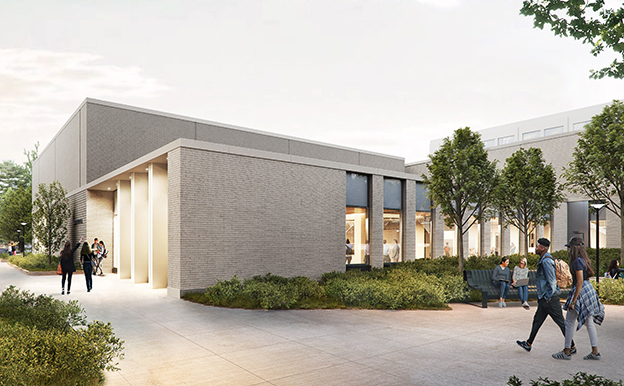Update: The full Board of Trustees approved the project during its meeting on Feb. 16.
A Penn State Board of Trustees committee on Thursday recommended approval of a $115 million project to renovate and construct an addition for a University Park physics laboratory.
The project will renovate and address deferred maintenance in Osmond Lab on Pollock Road, create underground laboratory spaces and construct a 48,000-square-foot addition for a high-bay research facility, Bill Sitzabee, vice president for facilities management and planning and the chief facilities officer, told the Committee on Finance Business and Capital Planning.
The full Board of Trustees will consider approval during its meeting at 1 p.m. on Friday.
“This project provides critical updates to the Osmond Laboratory in support of world-class physics research and education,” Tracy Langkilde, Dean of the Eberly College of Science, said in a statement. “The quality of our faculty and their research has a direct impact on our reputation, student success and scientific innovation, which in turn allows us to recruit the best students. This project is critical for our ability to meet that goal.”
State capital funds through the commonwealth’s Department of General Services constitute $76.5 million of the budget, with the remaining $38.5 million coming from the university’s central reserves.
The addition “will provide space for large-scale instrument assembly and testing that includes balloons, rockets, satellite payloads and deep-underground experiments in areas of particle and astroparticle physics,” according to the university. It is expected to play a key role in physics department research and in attracting large interdisciplinary projects.
Renovations will include specialized subterranean research laboratory spaces that connect to the existing building and the addition, Sitzabee said.
Lecture hall renovations are also planned to “fix structural issues and provide new seating, new finishes and an improved classroom technology,” he added.
An outdoor gathering space just east of the addition will be above a new stormwater detention system.
The project was originally budgeted at $155 million, but planning staff and the project committee were asked to look for cost reductions. Faculty were consulted during the process, according to Sitzabee.
“Even with the reduction in the facility cost we believe that we are meeting all the key project objectives,” he said said. “This will make a tremendous improvement to the world-class physics program.”
Construction is expected to begin in March and be completed in January 2027.



